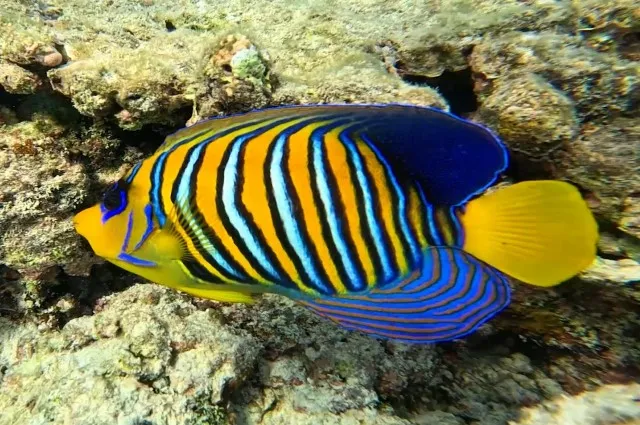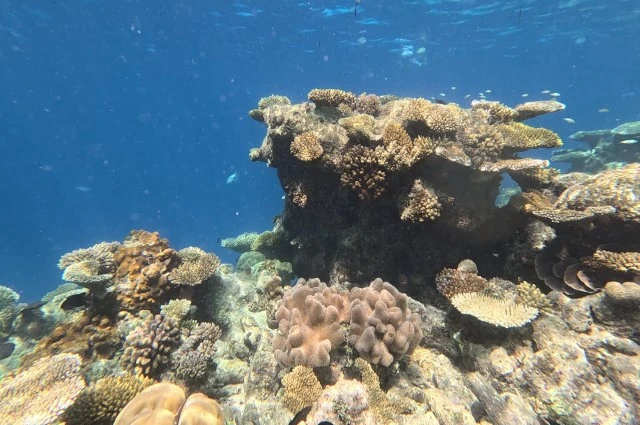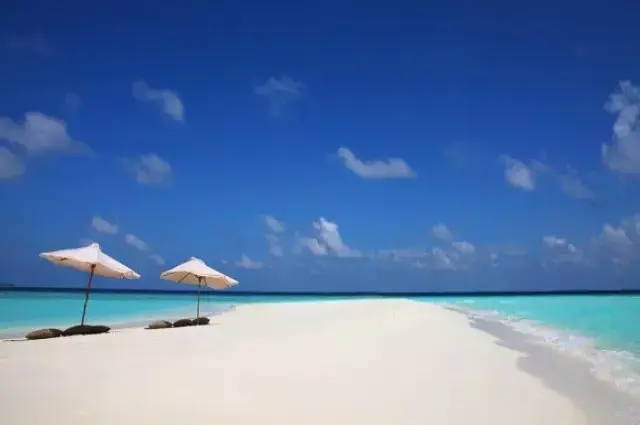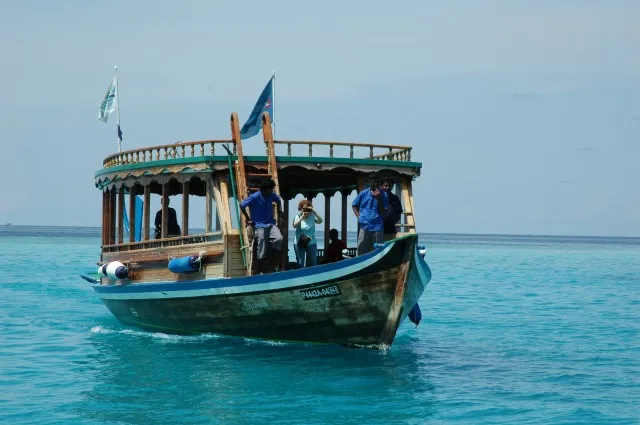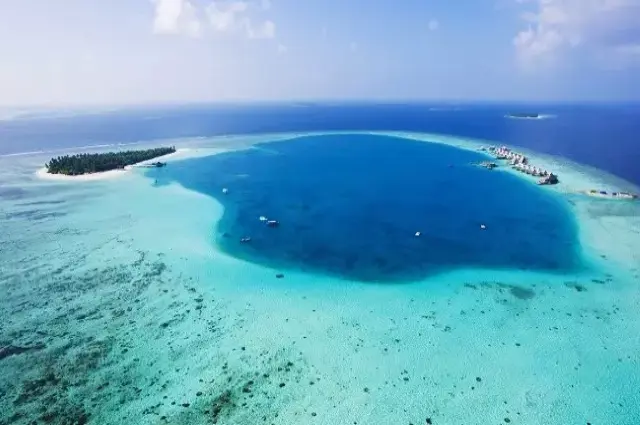Maldives Specialist Holidays Travel Agent
Get in touch with our Maldives specialists Clare, Dan, Jo & Liz today by email, contact form or by calling +44 (0)1580 712 690
Scattered across almost 1200 coral islands in the Indian Ocean, about 700km southwest of Sri Lanka, are the Maldives. Formed of a 26 atoll necklace, spanning 800km from north to south, the Maldives offer postcard-perfect tropical island settings.
World-renowned as a supreme diving destination it's on most divers' bucket-lists (although it's astonishing what can be seen with just a mask and snorkel), while romantics have long been attracted by the "no news, no shoes" ambience and sparsely populated beaches. More recently new resorts have aimed to cater for a wider audience and there's plenty of options for families and fun-seekers alike.
Each resort, of which there are over 150, is its own island and varies considerably in terms of style and price, from the cheap-and-cheerful to the ultimate in luxury. We travel frequently to the Maldives, and collectively our team has visited over 100 of these islands - with so much choice, allow us to provide unparalleled specialist guidance to curate your ideal Maldivian experience.
Unsurprisingly the majority of transport is by boat, with traditional Dhonis, both sail and diesel powered, offering a relaxed, leisurely pace. Most resorts within an hour's travel from Male operate a faster speedboat service, collecting visitors from the jetty at the airport. Some of the high-end properties provide a more luxurious motor yacht transfer, while at the mass-market level you might find yourself on a more ferry-like launch.
If travelling to more remote atolls, air travel offers speed and convenience. The Maldives boasts the largest fleet of seaplanes in the world, and the views afforded across the islands is unique and unforgettable. Seaplane transfers will take you directly to your resort, although you may touch down briefly at one or two other resorts en route for drop-offs and pick-ups.
In the past few years a number of local airports have sprung up around the archipelago, serving domestic traffic and tourists alike. Resorts then provide a quick speedboat transfer to and from each airstrip. Check-in is at the domestic terminal in Male, just a few moments walk from the main international arrivals area, and unlike the seaplane services, flights run to a schedule and can operate outside of daylight hours and in all weather. As a result domestic flights are, more often than not, more reliable than the seaplanes, as well as a little cheaper.
With our intimate knowledge of these destinations, we'll help choose the perfect place to complement your Sri Lanka experience for an unforgettable holiday or honeymoon.
Take a look at a sample itinerary for Sri Lanka & the Maldives.
Please be aware there must be a minimum of 6 months validity on your passport from your date of arrival into the Maldives.
Further advice regarding both entry requirements and health matters can be found on the FCDO Travel Advice and UK Travel Health Pro websites.
Being an island nation, watersports is the predominant leisure outlet available. Many resorts only allow low-key watersports to protect the fragile environment, such as kayaking, canoeing, catamaran sailing, windsurfing and paddleboarding. Keen snorkelers should also look out for resorts that boast a house reef for easy aquatic exploration right on your doorstep. Motorised watersports are also available at many resorts though, such as jetskiing, wakeboarding, kitesurfing, banana boats and Seabob underwater jetskiing.
Diving is also a major attraction, as the Maldives is home to some of the most diverse and vibrant marine life in the world; most resorts have a PADI-certified dive centre. Keen fishers may also have the opportunity to be taken on big game fishing excursions, depending on their resort.
The abundance of water activities however does not mean that the Maldives are devoid of culture, or that this culture is inaccessible to guests visiting resort islands. Many resorts offer excursions to local islands where handicrafts are sold and guests may take the opportunity to peruse and soak in the local Maldivian flavour.
As resorts have flourished in the Maldives, many now offer a range of land activities for all ages, from sports such as tennis, pickleball & racquetball, to rejuvenating spa, yoga & wellness programs, teens & kids clubs, to cooking, art and craft classes.
As part of our complimentary consultancy service, we'll discuss what your interests are and help you select the best resorts to suit your perfect vacation.
If you're looking for a few extra hours of sunshine, you should travel between December and April, which is the high season and the most popular period. Underwater visibility tends to be clearer, so this is a great time for snorkelling and diving. May to November is the period when storms and rain are more likely. In these months plankton blooms contribute to cloudier waters, but also attract the large feeders such as manta rays and whale sharks, as well as offering increased chances of seeing bioluminescent displays.
Ultimately, it is simply not possible to predict weather across the 800km extent of the Maldives islands, particularly in recent years when the patterns have become far less regular. There is no land mass to influence where the rain falls, so there is no way of saying whether any region, north or south would have more or less precipitation- North Malé Atoll could be experiencing clear sunshine while Gaafu Atoll is experiencing a thunderstorm.
We generally consider the best times to go in terms of value for money as late-April/early-May, or during October. If you are looking for stable weather then January to March is your best bet, though prices are correspondingly higher and offer no guarantee of unmitigated, clear weather.
Seats are available in Economy, Premium Economy, Business and First Class depending on the airline and aircraft configuration. We only recommend scheduled airlines, as the service quality, entertainment, and additional 2-3 inches of legroom makes all the difference on long haul flights.
From Velana International Airport you will then reach your resort island by speedboat, for islands in the North and South Male atolls, or by seaplane or domestic flight transfer (followed by a speedboat from the local airport) for those further away.
Note that seaplane transfers to and from resort islands operate in daylight hours only, and late arrivals into or early departures from the airport can require an overnight stopover in Male or run the risk of complications.
We’ve put together a detailed guide on our blog to help you choose: The Best Maldives Resorts for Families.
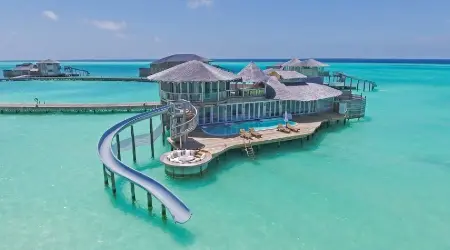
Soneva's other resorts, Soneva Fushi and Soneva Secret followed suit, and OZEN RESERVE BOLIFUSHI joined the club. Gili Lankanfushi and Cora Cora also have a single villa each with water slide.
Whale sharks are present year round in and around the South Ari Atoll and there is a good chance of spotting adults and juveniles, particularly just outside the atoll rim.
One of the best places to see manta rays is the Baa Atoll. In particular there is a well-frequented plankton-rich feeding ground at Hanifaru Bay on the Eastern edge of the atoll where mantas tend to congregate, sometimes in large numbers.
On the other hand, if you feel that you wish to recognise good service then additional tips are most welcome. We would suggest considering a tip under the following circumstances:
World-renowned as a supreme diving destination it's on most divers' bucket-lists (although it's astonishing what can be seen with just a mask and snorkel), while romantics have long been attracted by the "no news, no shoes" ambience and sparsely populated beaches. More recently new resorts have aimed to cater for a wider audience and there's plenty of options for families and fun-seekers alike.
Each resort, of which there are over 150, is its own island and varies considerably in terms of style and price, from the cheap-and-cheerful to the ultimate in luxury. We travel frequently to the Maldives, and collectively our team has visited over 100 of these islands - with so much choice, allow us to provide unparalleled specialist guidance to curate your ideal Maldivian experience.
Getting Around
The Maldives is an island nation comprised of more than 99% water, which makes getting around a little more interesting than calling an Uber from the airport.Unsurprisingly the majority of transport is by boat, with traditional Dhonis, both sail and diesel powered, offering a relaxed, leisurely pace. Most resorts within an hour's travel from Male operate a faster speedboat service, collecting visitors from the jetty at the airport. Some of the high-end properties provide a more luxurious motor yacht transfer, while at the mass-market level you might find yourself on a more ferry-like launch.
If travelling to more remote atolls, air travel offers speed and convenience. The Maldives boasts the largest fleet of seaplanes in the world, and the views afforded across the islands is unique and unforgettable. Seaplane transfers will take you directly to your resort, although you may touch down briefly at one or two other resorts en route for drop-offs and pick-ups.
In the past few years a number of local airports have sprung up around the archipelago, serving domestic traffic and tourists alike. Resorts then provide a quick speedboat transfer to and from each airstrip. Check-in is at the domestic terminal in Male, just a few moments walk from the main international arrivals area, and unlike the seaplane services, flights run to a schedule and can operate outside of daylight hours and in all weather. As a result domestic flights are, more often than not, more reliable than the seaplanes, as well as a little cheaper.
Sri Lanka & the Maldives
Given its location and all it has to offer, Sri Lanka twins perfectly with the Maldives. We can think of no better way to round off a heady, whirlwind tour than balanced with a few, low-key days on one of the Maldives' 'no-news, no-shoes', remote desert island resorts.With our intimate knowledge of these destinations, we'll help choose the perfect place to complement your Sri Lanka experience for an unforgettable holiday or honeymoon.
Take a look at a sample itinerary for Sri Lanka & the Maldives.
Travel Advice
Health
When travelling to the Maldives you should seek advice from your doctor or health professional well in advance of travel to check what vaccinations and/or any other health requirements may be necessary.Visas
All holiday-makers will be issued with a 30 day tourist visa on arrival into Male. There is currently no charge for your visa.Please be aware there must be a minimum of 6 months validity on your passport from your date of arrival into the Maldives.
Further advice regarding both entry requirements and health matters can be found on the FCDO Travel Advice and UK Travel Health Pro websites.
Maldives Holiday FAQs
What is there to do in the Maldives?
The beauty of the Maldives, of course, is that you don’t have to do anything. The utterly picturesque environment and overwhelming tranquility implores visitors to do nothing more than find a hammock and settle in. For those not so keen on learning the 'art of doing nothing', and wishing for a little recreation and excitement, the Maldives also offers an array of activities to keep mind and body stimulated.Being an island nation, watersports is the predominant leisure outlet available. Many resorts only allow low-key watersports to protect the fragile environment, such as kayaking, canoeing, catamaran sailing, windsurfing and paddleboarding. Keen snorkelers should also look out for resorts that boast a house reef for easy aquatic exploration right on your doorstep. Motorised watersports are also available at many resorts though, such as jetskiing, wakeboarding, kitesurfing, banana boats and Seabob underwater jetskiing.
Diving is also a major attraction, as the Maldives is home to some of the most diverse and vibrant marine life in the world; most resorts have a PADI-certified dive centre. Keen fishers may also have the opportunity to be taken on big game fishing excursions, depending on their resort.
The abundance of water activities however does not mean that the Maldives are devoid of culture, or that this culture is inaccessible to guests visiting resort islands. Many resorts offer excursions to local islands where handicrafts are sold and guests may take the opportunity to peruse and soak in the local Maldivian flavour.
As resorts have flourished in the Maldives, many now offer a range of land activities for all ages, from sports such as tennis, pickleball & racquetball, to rejuvenating spa, yoga & wellness programs, teens & kids clubs, to cooking, art and craft classes.
As part of our complimentary consultancy service, we'll discuss what your interests are and help you select the best resorts to suit your perfect vacation.
When is the best time to go to the Maldives?
The Maldives has the advantage of being a truly year-round destination; air (30-32°C) and sea (28-30°C) temperatures barely change throughout. Maldivians still operate on the ancient ‘nakaiy’ calendar, which determines their lifestyle (when to fish, build, marry etc.). This calendar is split into two seasons, Iruvai and Hulhangu, known to tourists simply as high and low season respectively.If you're looking for a few extra hours of sunshine, you should travel between December and April, which is the high season and the most popular period. Underwater visibility tends to be clearer, so this is a great time for snorkelling and diving. May to November is the period when storms and rain are more likely. In these months plankton blooms contribute to cloudier waters, but also attract the large feeders such as manta rays and whale sharks, as well as offering increased chances of seeing bioluminescent displays.
Ultimately, it is simply not possible to predict weather across the 800km extent of the Maldives islands, particularly in recent years when the patterns have become far less regular. There is no land mass to influence where the rain falls, so there is no way of saying whether any region, north or south would have more or less precipitation- North Malé Atoll could be experiencing clear sunshine while Gaafu Atoll is experiencing a thunderstorm.
We generally consider the best times to go in terms of value for money as late-April/early-May, or during October. If you are looking for stable weather then January to March is your best bet, though prices are correspondingly higher and offer no guarantee of unmitigated, clear weather.
How do you get to the Maldives?
Angelfish Travel use British Airways and Virgin Atlantic for direct flights, and Emirates, Qatar Airways, Etihad, Sri Lankan and Turkish Airlines with a stop-over. Departures can be arranged from most UK airports.Seats are available in Economy, Premium Economy, Business and First Class depending on the airline and aircraft configuration. We only recommend scheduled airlines, as the service quality, entertainment, and additional 2-3 inches of legroom makes all the difference on long haul flights.
From Velana International Airport you will then reach your resort island by speedboat, for islands in the North and South Male atolls, or by seaplane or domestic flight transfer (followed by a speedboat from the local airport) for those further away.
Note that seaplane transfers to and from resort islands operate in daylight hours only, and late arrivals into or early departures from the airport can require an overnight stopover in Male or run the risk of complications.
How do I get the best deal for my Maldives holiday?
As Maldives specialists, we can help you get the best deal for your vacation! Book early for peak seasons and special occasions to secure availability and discounts. For lower prices, travel around shoulder seasons, avoiding peak times and school holidays. Check our website for early booking and tactical low-season offers, and utilize our service to hold flights during airline sales, ensuring the best package without immediate commitment.Are there benefits to All Inclusive in the Maldives?
All-Inclusive (AI) options in the Maldives offer several benefits, particularly for budget management during family trips or with hungry teenagers, as they eliminate the concern of a large bill at the end of your stay.What is the minimum advised stay in the Maldives?
For a trip to the Maldives, it's recommended to stay at least 7 nights, considering the long journey to get there, unless you're combining it with another destination like Dubai or Sri Lanka. A typical stay lasts 10 nights, though many travellers opt for 14 nights or longer.Why are holiday costs higher for the Maldives?
Holiday costs in the Maldives are higher due to several factors. Firstly, the long distance travel results in higher flight prices compared to short-haul destinations. The Maldives' unique geography presents logistical challenges for resort construction and maintenance, leading to increased costs for deliveries, power, and transport.Is the sea safe and warm in the Maldives?
The sea in the Maldives is warm, with temperatures consistently around 26-28°C throughout the year, and it's relatively safe for swimming and diving, provided necessary precautions are taken. It's important to consult with the dive team about safe entry points and areas to avoid due to strong currents.Is the Maldives a suitable destination for families?
Absolutely – the Maldives is now one of the world’s most exciting destinations for families. Once known mainly as a honeymoon & divers spot, many resorts now cater brilliantly to children and multi-generational groups. You’ll find dedicated kids’ and teens’ clubs, family-friendly dining options, a huge choice of water and land-based activities, and spacious villas that work perfectly for families. Whether you’re travelling with young children, teenagers, or grandparents, there are resorts to suit every style of family holiday.We’ve put together a detailed guide on our blog to help you choose: The Best Maldives Resorts for Families.
What activities can children enjoy in the Maldives?
The Maldives is a natural playground for children. Many resorts run kids’ and teens’ clubs with activities ranging from treasure hunts and beach games to cooking classes and craft workshops. Families can enjoy dolphin cruises, snorkelling on shallow reefs, kayaking, and even outdoor cinema nights under the stars. Some resorts, like Six Senses Laamu, even offer interactive marine biology centres where kids can learn about coral reefs and ocean life in a fun, hands-on way.Are there family all-inclusive resorts in the Maldives?
Yes – in fact, all-inclusive is one of the best ways to enjoy a Maldives family holiday, as it takes the stress out of dining and activities. Resorts like Heritance Aarah and Emerald Maldives Resort & Spa offer premium all-inclusive packages that include à la carte meals, drinks, water sports, and kids’ club access. This makes budgeting easier for families while ensuring that children (and parents) can enjoy a wide variety of food and activities without extra costs.Which resorts in the Maldives have villas with water slides?
Soneva Jani kicked off the trend for slides allowing guests (of all ages!) to slip into the lagoon via water chute from their over water villas.
Soneva's other resorts, Soneva Fushi and Soneva Secret followed suit, and OZEN RESERVE BOLIFUSHI joined the club. Gili Lankanfushi and Cora Cora also have a single villa each with water slide.
Where are the best places to see whale sharks and manta rays in the Maldives?
While whale sharks and mantas can be found across the Maldives there are some areas where the chances of a sighting are higher than others.Whale sharks are present year round in and around the South Ari Atoll and there is a good chance of spotting adults and juveniles, particularly just outside the atoll rim.
One of the best places to see manta rays is the Baa Atoll. In particular there is a well-frequented plankton-rich feeding ground at Hanifaru Bay on the Eastern edge of the atoll where mantas tend to congregate, sometimes in large numbers.
Are there restrictions on buying alcohol in the Maldives?
Alcohol is only available in the Maldives in hotels and resorts that are granted a licence to sell them. It is not possible to buy alcohol outside of these establishments. Taking alcohol into the Maldives is prohibited and it will be confiscated on arrival.What is the tipping protocol in the Maldives?
Tipping is not expected at the point of sale in hotels and resorts. A service charge is added to all purchases and this is distributed monthly to staff.On the other hand, if you feel that you wish to recognise good service then additional tips are most welcome. We would suggest considering a tip under the following circumstances:
- Your massage or beauty therapist following spa treatments.
- The boat team following scuba dives or off-island excursions.
- Accompanied activities such as guided snorkelling, personal training or tennis lessons.
- Your room attendant and butler at the end of your stay.
- Any other staff member that you feel has gone 'above-and-beyond' during your stay.




